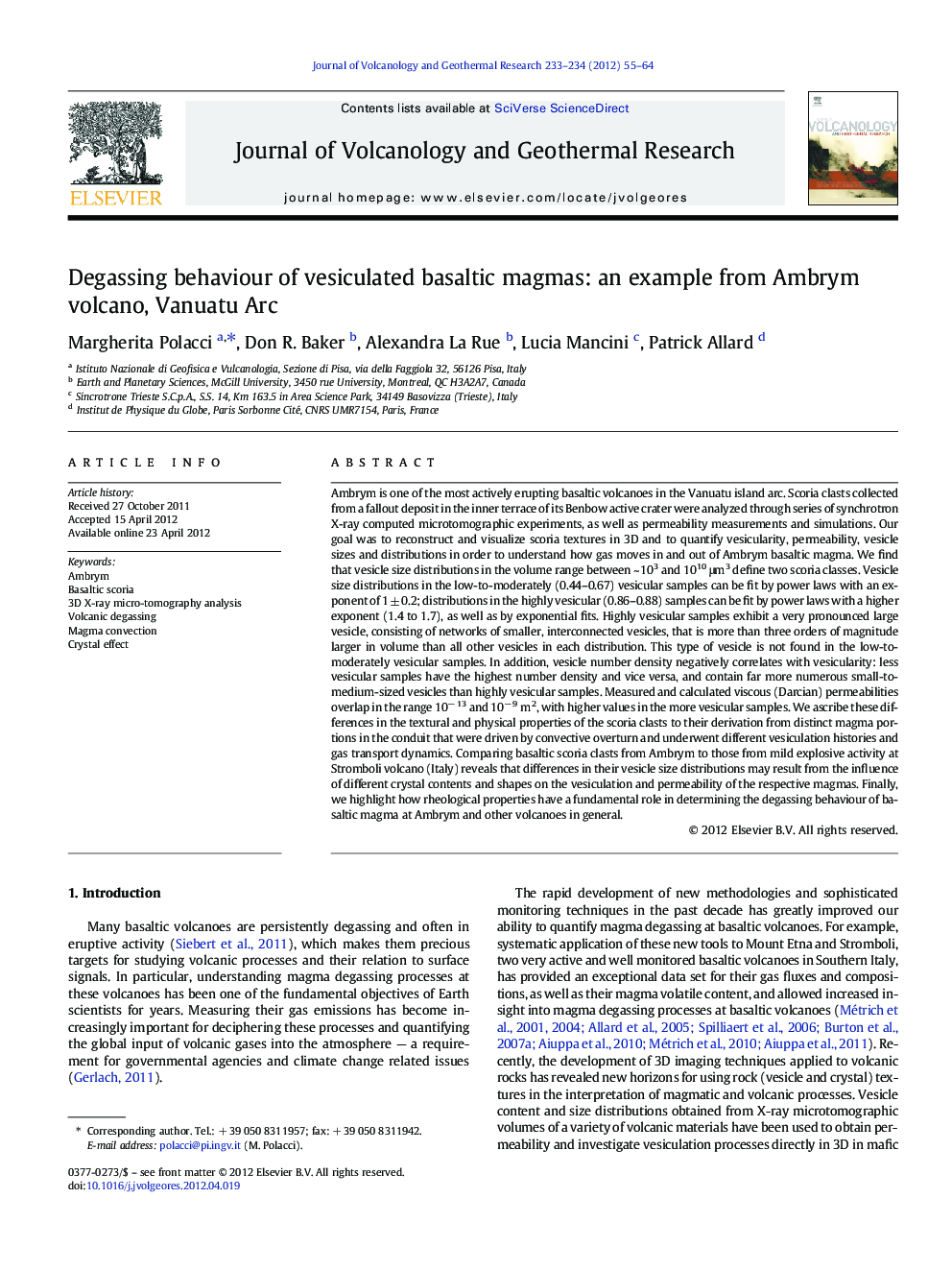| کد مقاله | کد نشریه | سال انتشار | مقاله انگلیسی | نسخه تمام متن |
|---|---|---|---|---|
| 4714939 | 1638380 | 2012 | 10 صفحه PDF | دانلود رایگان |

Ambrym is one of the most actively erupting basaltic volcanoes in the Vanuatu island arc. Scoria clasts collected from a fallout deposit in the inner terrace of its Benbow active crater were analyzed through series of synchrotron X-ray computed microtomographic experiments, as well as permeability measurements and simulations. Our goal was to reconstruct and visualize scoria textures in 3D and to quantify vesicularity, permeability, vesicle sizes and distributions in order to understand how gas moves in and out of Ambrym basaltic magma. We find that vesicle size distributions in the volume range between ~ 103 and 1010 μm3 define two scoria classes. Vesicle size distributions in the low-to-moderately (0.44–0.67) vesicular samples can be fit by power laws with an exponent of 1 ± 0.2; distributions in the highly vesicular (0.86–0.88) samples can be fit by power laws with a higher exponent (1.4 to 1.7), as well as by exponential fits. Highly vesicular samples exhibit a very pronounced large vesicle, consisting of networks of smaller, interconnected vesicles, that is more than three orders of magnitude larger in volume than all other vesicles in each distribution. This type of vesicle is not found in the low-to-moderately vesicular samples. In addition, vesicle number density negatively correlates with vesicularity: less vesicular samples have the highest number density and vice versa, and contain far more numerous small-to-medium-sized vesicles than highly vesicular samples. Measured and calculated viscous (Darcian) permeabilities overlap in the range 10− 13 and 10− 9 m2, with higher values in the more vesicular samples. We ascribe these differences in the textural and physical properties of the scoria clasts to their derivation from distinct magma portions in the conduit that were driven by convective overturn and underwent different vesiculation histories and gas transport dynamics. Comparing basaltic scoria clasts from Ambrym to those from mild explosive activity at Stromboli volcano (Italy) reveals that differences in their vesicle size distributions may result from the influence of different crystal contents and shapes on the vesiculation and permeability of the respective magmas. Finally, we highlight how rheological properties have a fundamental role in determining the degassing behaviour of basaltic magma at Ambrym and other volcanoes in general.
► We conducted a 3D microtomography analysis on basaltic scoriae from Ambrym volcano.
► Scoriae subdivide in two classes: low-to-moderately vesicular and highly vesicular.
► Scoria classes differ in vesicle fraction, shape, size distribution and permeability.
► Differences are ascribed to efficient gas percolation and magma convection.
► Crystals exert a major control on permeability and degassing of basaltic magmas.
Journal: Journal of Volcanology and Geothermal Research - Volumes 233–234, 1 July 2012, Pages 55–64